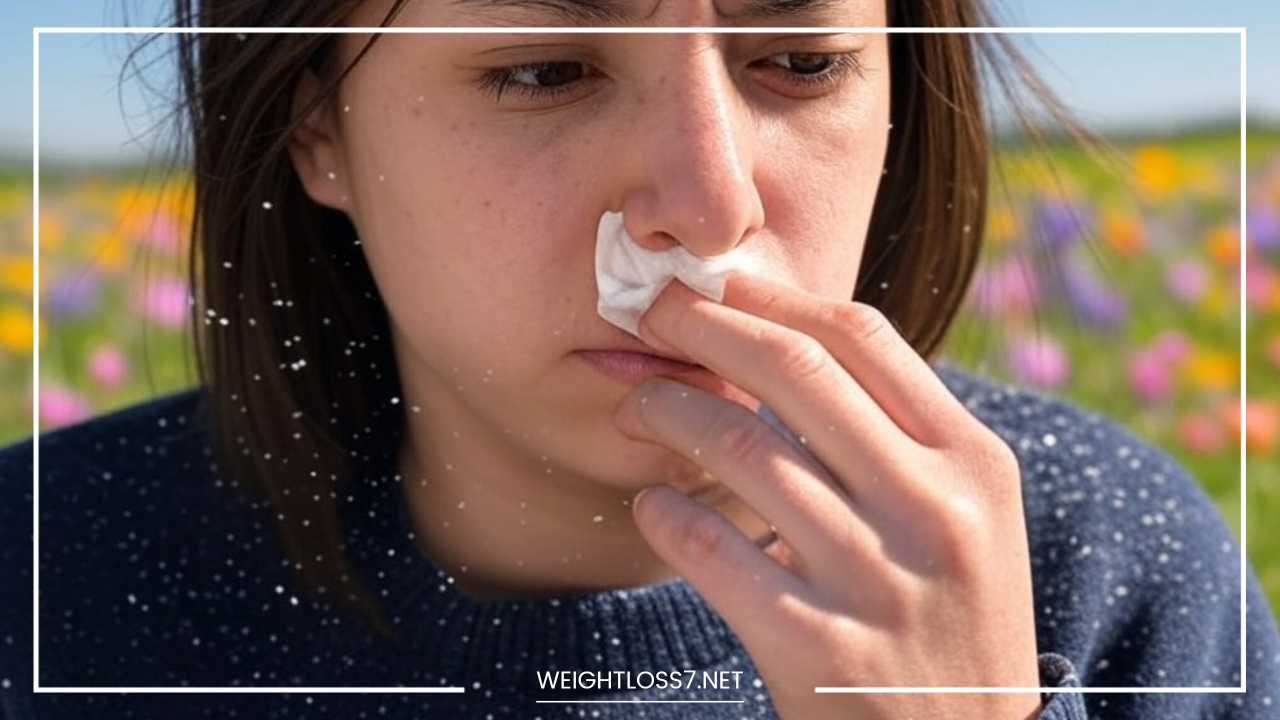What Are the Symptoms of Hayfever

Symptoms of Hayfever
Decoding the Sneezes: A Comprehensive Guide to Hay Fever Symptoms
Hay fever, medically known as allergic rhinitis, is a widespread allergic condition affecting millions globally.
It’s not a fever at all, but rather an inflammatory response triggered by the immune system’s overreaction to typically harmless substances called allergens.
These allergens, often airborne, cause a cascade of reactions leading to a variety of uncomfortable symptoms.
This comprehensive guide delves into the intricacies of hay fever, exploring its diverse symptoms, underlying causes, diagnostic methods, and management strategies.
Understanding the Hay Fever Mechanism
Hay fever arises when the immune system mistakenly identifies allergens as threats. In individuals with hay fever, exposure to these allergens, such as pollen, dust mites, pet dander, or mold spores, triggers the production of IgE antibodies.
These antibodies attach to mast cells, which are immune cells found in various tissues, including the nasal passages, eyes, and airways.
When the allergen is encountered again, it binds to the IgE antibodies on the mast cells, causing them to release histamine and other inflammatory mediators. These chemicals are responsible for the characteristic symptoms of hay fever.
The Symphony of Symptoms: A Detailed Breakdown
Hay fever manifests in a variety of ways, with symptoms often categorized as nasal, ocular, and other associated manifestations. The severity and combination of symptoms can vary significantly between individuals.
Nasal Symptoms: The Hallmark of Hay Fever
-
Runny Nose (Rhinorrhea): Copious amounts of clear, watery mucus characterize this symptom. The nasal passages become inflamed and produce excess fluid, leading to a constant dripping or flowing nose.
-
Nasal Congestion: Inflammation of the nasal lining causes swelling and narrowing of the nasal passages, making breathing through the nose difficult. This congestion can lead to mouth breathing, snoring, and disturbed sleep.
-
Sneezing: Frequent and often violent sneezing fits are a common reflex action triggered by the irritation of the nasal passages by allergens. These sneezing episodes can be disruptive and exhausting.
-
Itchy Nose: An intense itching sensation within the nasal passages is a hallmark of hay fever. This itching can be relentless, prompting frequent rubbing and scratching, which can further irritate the delicate nasal lining.
-
Postnasal Drip: Excess mucus produced in the nasal passages can drain down the back of the throat, causing a sensation of postnasal drip. This can lead to a sore throat, coughing, and a constant urge to clear the throat.
Ocular Symptoms: Eyes Under Attack
-
Itchy Eyes: The eyes become intensely itchy, often accompanied by redness and tearing. This itching can be so severe that it interferes with daily activities.
-
Watery Eyes (Lacrimation): Hay fever triggers excessive tear production, leading to watery eyes and blurred vision. This excessive tearing can be uncomfortable and make it difficult to see clearly.
-
Red Eyes (Conjunctivitis): The conjunctiva, the clear membrane covering the white part of the eye and the inner surface of the eyelids, becomes inflamed,1 causing the eyes to appear red and bloodshot.
-
Swollen Eyelids: The eyelids may become swollen or puffy, particularly in the morning. This swelling can be noticeable and contribute to a tired or fatigued appearance.
Other Associated Symptoms: Beyond the Nose and Eyes
-
Cough: A persistent cough can develop due to the irritation of the throat and airways by postnasal drip and inflammation. This cough can be dry or productive, depending on the amount of mucus present.
-
Sore Throat: The throat may feel sore, scratchy, or irritated due to postnasal drip and inflammation. This soreness can make swallowing uncomfortable.
-
Headache: Sinus congestion and inflammation can lead to headaches, often described as a pressure or throbbing sensation in the forehead or around the eyes.
-
Fatigue: Hay fever can cause significant fatigue and tiredness due to disrupted sleep, persistent symptoms, and the body’s ongoing immune response. This fatigue can impact daily activities and quality of life.
-
Reduced Sense of Smell or Taste: Nasal congestion can impair the sense of smell and taste, making food less enjoyable.
-
Earache: Inflammation of the Eustachian tube, which connects the middle ear to the back of the throat, can cause earache or a feeling of fullness in the ears.
Less Common but Significant Symptoms
While the above symptoms are the most common, hay fever can also present with less frequent but equally bothersome manifestations:
-
Asthma-like Symptoms: Hay fever can trigger or worsen asthma symptoms, such as wheezing, shortness of breath, and chest tightness. Individuals with both hay fever and asthma need to be particularly vigilant.
-
Skin Rashes: In some cases, hay fever can manifest as skin rashes, hives, or eczema. These skin reactions are typically itchy and can appear anywhere on the body.
-
Sinus Infections: Chronic sinus congestion caused by hay fever can increase the risk of bacterial sinus infections. These infections can cause facial pain, pressure, and thick, discolored nasal discharge.
-
Sleep Disturbances: Hay fever symptoms, particularly nasal congestion and coughing, can significantly disrupt sleep, leading to insomnia and daytime fatigue. Poor sleep can exacerbate other hay fever symptoms and impact overall well-being.
-
Cognitive Impairment: Some studies suggest that hay fever may affect cognitive functions, such as concentration, memory, and decision-making. This cognitive impairment can impact academic or work performance.
Identifying the Culprits: Causes of Hay Fever
Hay fever is primarily triggered by airborne allergens, the most common of which include:
-
Pollen: Pollen from trees, grasses, and weeds is a major trigger for seasonal hay fever. Tree pollen is typically prevalent in spring, grass pollen in summer, and weed pollen in fall.
-
Dust Mites: These microscopic creatures thrive in dust and bedding, feeding on dead skin cells. Dust mite allergies can cause year-round hay fever symptoms.
-
Pet Dander: Allergens found in the skin, saliva, and urine of pets, such as cats and dogs, can trigger hay fever, even if the animal is not present. These allergens can linger in the air and on surfaces for extended periods.
-
Mold Spores: Mold spores are present in the air, particularly in damp or humid environments. Exposure to mold spores can trigger hay fever symptoms, especially in individuals with mold allergies.
The Diagnostic Journey: Pinpointing the Problem
Diagnosing hay fever typically involves a combination of methods:
-
Medical History and Physical Examination: The doctor will ask about your symptoms, their frequency and severity, and any potential triggers. A physical examination may also be performed to assess the nasal passages, eyes, and ears.
-
Allergy Testing: Allergy testing can help identify the specific allergens triggering your hay fever symptoms. Common allergy tests include:
-
Skin Prick Test: Small amounts of various allergens are applied to the skin, and a reaction is observed. A raised, itchy bump indicates an allergy.
-
Blood Test (Specific IgE Test): A blood sample is taken to measure the levels of specific IgE antibodies to different allergens. Elevated IgE levels indicate an allergy.
-
Managing the Symptoms: Treatment Strategies
While there is no cure for hay fever, various treatment options are available to manage the symptoms and improve quality of life:
-
Allergen Avoidance: The most effective way to manage hay fever is to avoid the allergens that trigger your symptoms. This may involve:
- Staying indoors during peak pollen seasons.
- Using allergen-proof bedding and regularly washing bedding in hot water.
- Minimizing exposure to dust mites by regularly cleaning and vacuuming.
- Avoiding contact with pets or using HEPA air filters to remove pet dander from the air.
- Addressing moisture problems to prevent mold growth.
-
Medications: Several over-the-counter and prescription medications can help relieve hay fever symptoms:
-
Antihistamines: These medications block the action of histamine, reducing itching, sneezing, and runny nose.
-
Decongestants: These medications shrink swollen nasal tissues, making breathing easier. However, they should be used cautiously and for short periods to avoid rebound congestion.
-
Nasal Sprays: Corticosteroid nasal sprays reduce inflammation in the nasal passages, relieving congestion, runny nose, and sneezing.
-
Eye Drops: Eye drops containing antihistamines or lubricating agents can relieve itchy, watery eyes.
-
Immunotherapy (Allergy Shots): This involves receiving regular injections of small amounts of allergens to gradually desensitize the immune system and reduce the severity of allergic reactions.
-
-
Lifestyle Modifications: Certain lifestyle changes can also help manage hay fever symptoms:
-
Nasal Irrigation: Rinsing the nasal passages with a saline solution can help remove allergens and mucus.
-
Humidifier: Using a humidifier can help keep the air moist, which can soothe irritated nasal passages.
-
Healthy Diet: Maintaining a healthy diet rich in fruits, vegetables, and antioxidants can support overall immune function.
-
Living Well with Hay Fever: A Proactive Approach
Hay fever can significantly impact quality of life, but with a proactive approach to management, individuals can effectively control their symptoms and live full and active lives. By understanding the triggers, recognizing the symptoms, and working
with their healthcare provider to develop a personalized treatment plan, individuals with hay fever can minimize the impact of this condition and enjoy a better quality of life.
Remember, effective management often involves a combination of allergen avoidance, medication, and lifestyle modifications.
Navigating the Seasons: Seasonal Variations in Hay Fever
Hay fever symptoms can vary depending on the time of year, largely due to the presence of different airborne allergens.
Understanding these seasonal variations can help individuals anticipate and prepare for potential symptom flare-ups.
-
Spring: Spring is often associated with tree pollen, making it a challenging time for individuals with tree pollen allergies. As trees begin to bloom, they release vast amounts of pollen into the air, triggering hay fever symptoms in susceptible individuals.
-
Summer: Summer is typically the season for grass pollen, which can cause significant hay fever symptoms. Grasses release pollen throughout the summer months, with peak pollen counts often occurring on warm, sunny, and windy days.
-
Fall: Fall is often associated with weed pollen, particularly ragweed. Ragweed is a common culprit behind fall hay fever symptoms, and its pollen can travel long distances, affecting individuals even in areas where ragweed is not prevalent.
-
Winter: While winter is generally considered a time of respite from seasonal pollen allergies, individuals with allergies to indoor allergens, such as dust mites, pet dander, or mold spores, may experience symptoms year-round, even during the winter months. Heating systems can circulate these allergens, exacerbating symptoms.
Hay Fever in Children: A Special Consideration
Hay fever can affect children of all ages, and it can significantly impact their quality of life, affecting sleep, school performance, and participation in extracurricular activities.
It’s crucial to recognize the symptoms of hay fever in children and seek appropriate medical care. Children may have difficulty articulating their symptoms, so parents and caregivers should be observant for signs such as frequent sneezing, runny nose, itchy eyes, and persistent coughing.
Early diagnosis and treatment are essential to prevent complications and ensure that children with hay fever can thrive.
Living with Hay Fever: Tips for Managing Symptoms
In addition to medical treatment, several self-help measures can help individuals manage hay fever symptoms and improve their quality of life:
-
Monitor Pollen Counts: Staying informed about pollen counts in your area can help you anticipate high pollen days and take precautions, such as staying indoors or limiting outdoor activities. Many weather apps and websites provide pollen forecasts.
-
Keep Windows Closed: During peak pollen seasons, keep windows closed in your home and car to minimize exposure to pollen.
-
Use Air Conditioning: Air conditioning can help filter pollen and other allergens from the air, creating a more comfortable indoor environment.
-
Wash Clothes and Bedding Frequently: Washing clothes and bedding regularly can help remove pollen, dust mites, and other allergens.
-
Shower Before Bed: Showering before bed can help remove pollen from your hair and skin, preventing it from transferring to your bedding and triggering symptoms during sleep.
-
Avoid Irritants: Avoid exposure to other irritants, such as smoke, strong odors, and air pollution, which can exacerbate hay fever symptoms.
-
Maintain a Healthy Lifestyle: A healthy lifestyle, including a balanced diet, regular exercise, and sufficient sleep, can support overall immune function and help manage hay fever symptoms.
When to See a Doctor
While many individuals can manage hay fever symptoms with over-the-counter medications and self-help measures, it’s essential to see a doctor if:
- Symptoms are severe or interfere with daily activities.
- Over-the-counter medications are not effective.
- Symptoms worsen or do not improve with treatment.
- You experience recurrent sinus infections.
- You have asthma and hay fever symptoms worsen your asthma.
The Future of Hay Fever Treatment
Ongoing research is exploring new and innovative approaches to treating hay fever, including:
-
Novel Immunotherapies: Researchers are investigating new forms of immunotherapy that may be more effective and convenient than traditional allergy shots.
-
Biologic Therapies: Biologic therapies target specific molecules involved in the allergic response, offering a more targeted approach to treatment.
-
Personalized Medicine: Advances in personalized medicine may allow for more tailored treatment plans based on an individual’s specific allergens and genetic makeup.
Final Thoughts: Embracing a Symptom-Controlled Life
Hay fever, while a common and often bothersome condition, doesn’t have to dictate one’s lifestyle. By understanding the causes, recognizing the diverse symptoms, and working collaboratively with healthcare providers, individuals can effectively manage their hay fever and lead full and active lives.
From allergen avoidance strategies to advanced treatment options, a range of tools are available to help individuals minimize the impact of hay fever and breathe easier, regardless of the season.
Remember, proactive management and a personalized approach are key to conquering the sneezes and embracing a symptom-controlled life.

















